Solar eclipse of June 12, 2029
A partial solar eclipse will occur on Tuesday, June 12, 2029. A solar eclipse occurs when the Moon passes between Earth and the Sun, thereby totally or partly obscuring the image of the Sun for a viewer on Earth. A partial solar eclipse occurs in the polar regions of the Earth when the center of the Moon's shadow misses the Earth.
| Solar eclipse of June 12, 2029 | |
|---|---|
 Map | |
| Type of eclipse | |
| Nature | Partial |
| Gamma | 1.2943 |
| Magnitude | 0.4576 |
| Maximum eclipse | |
| Coordinates | 66.8°N 66.2°W |
| Times (UTC) | |
| Greatest eclipse | 4:06:13 |
| References | |
| Saros | 118 (69 of 72) |
| Catalog # (SE5000) | 9572 |
The eclipse will be visible from Northern and Central Europe, northern Russia, Arctic, Greenland, and northern North America.
Images
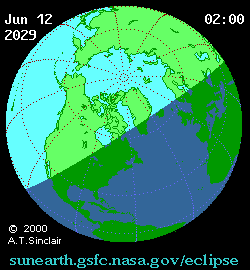
Animated path
Related eclipses
Solar eclipses 2029–2032
This eclipse is a member of a semester series. An eclipse in a semester series of solar eclipses repeats approximately every 177 days and 4 hours (a semester) at alternating nodes of the Moon's orbit.[1]
Note: Partial solar eclipses on January 14, 2029 and July 11, 2029 occur on the previous lunar year eclipse set.
| Solar eclipse series sets from 2029–2032 | ||||
|---|---|---|---|---|
| Descending node | Ascending node | |||
| 118 | June 12, 2029 Partial |
123 | December 5, 2029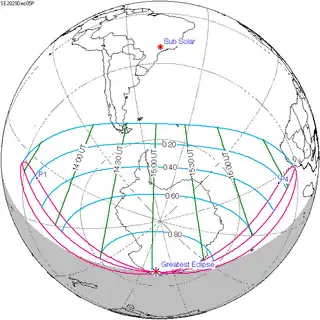 Partial | |
| 128 | June 1, 2030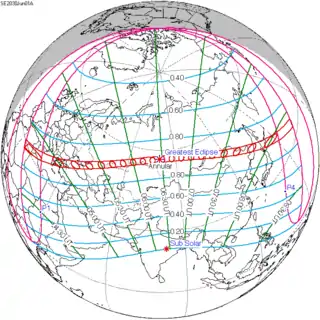 Annular |
133 | November 25, 2030 Total | |
| 138 | May 21, 2031 Annular |
143 | November 14, 2031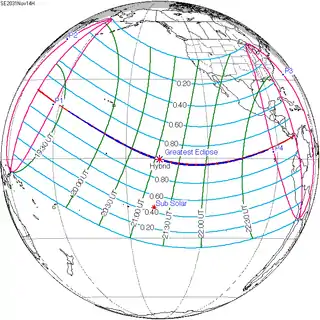 Hybrid | |
| 148 | May 9, 2032 Annular |
153 | November 3, 2032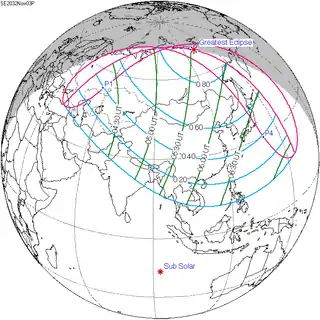 Partial | |
Saros 118
It is a part of Saros cycle 118, repeating every 18 years, 11 days, containing 72 events. The series started with partial solar eclipse on May 24, 803 CE. It contains total eclipses from August 19, 947 CE through October 25, 1650, hybrid eclipses on November 4, 1668, and November 15, 1686, and annular eclipses from November 27, 1704, through April 30, 1957. The series ends at member 72 as a partial eclipse on July 15, 2083. The longest duration of total was 6 minutes, 59 seconds on May 16, 1398.
| Series members 62–72 occur between 1901 and 2083: | ||
|---|---|---|
| 62 | 63 | 64 |
 Mar 29, 1903 |
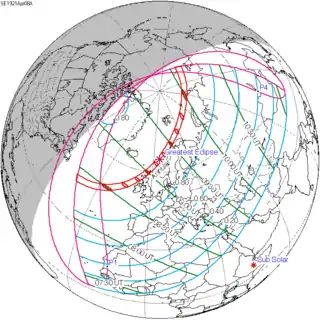 Apr 8, 1921 |
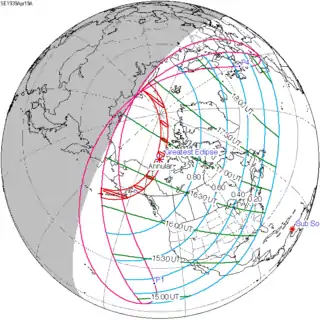 Apr 19, 1939 |
| 65 | 66 | 67 |
 Apr 30, 1957 |
 May 11, 1975 |
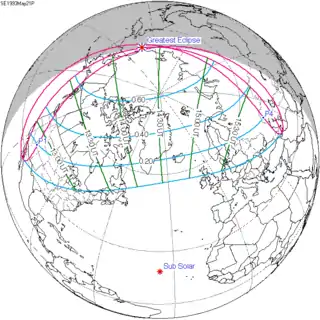 May 21, 1993 |
| 68 | 69 | 70 |
 Jun 1, 2011 |
 Jun 12, 2029 |
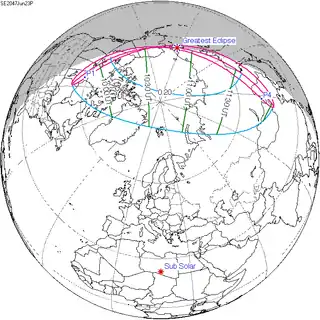 Jun 23, 2047 |
| 71 | 72 | |
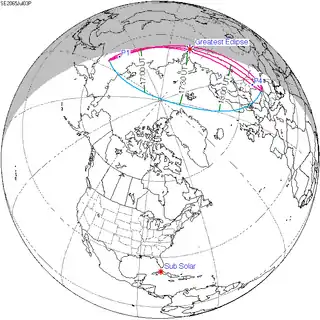 Jul 3, 2065 |
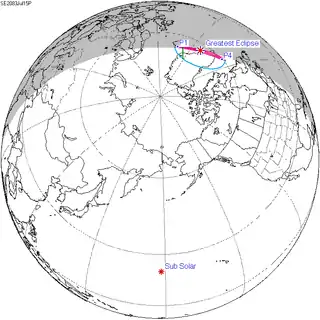 Jul 15, 2083 | |
Metonic cycle
The metonic series repeats eclipses every 19 years (6939.69 days), lasting about 5 cycles. Eclipses occur in nearly the same calendar date. In addition, the octon subseries repeats 1/5 of that or every 3.8 years (1387.94 days).
| 21 eclipse events between June 12, 2029 and June 12, 2105 | ||||
|---|---|---|---|---|
| June 11–12 | March 30–31 | January 16 | November 4–5 | August 23–24 |
| 118 | 120 | 122 | 124 | 126 |
 June 12, 2029 |
 March 30, 2033 |
 January 16, 2037 |
 November 4, 2040 |
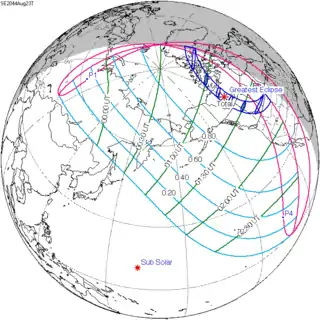 August 23, 2044 |
| 128 | 130 | 132 | 134 | 136 |
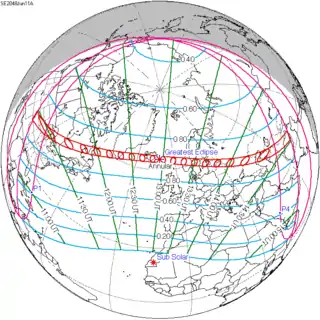 June 11, 2048 |
 March 30, 2052 |
 January 16, 2056 |
 November 5, 2059 |
 August 24, 2063 |
| 138 | 140 | 142 | 144 | 146 |
 June 11, 2067 |
 March 31, 2071 |
 January 16, 2075 |
 November 4, 2078 |
 August 24, 2082 |
| 148 | 150 | 152 | 154 | |
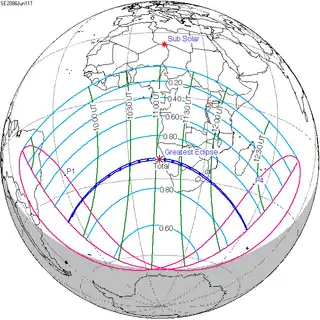 June 11, 2086 |
 March 31, 2090 |
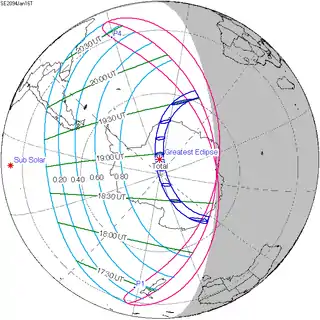 January 16, 2094 |
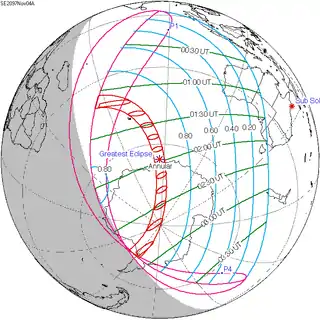 November 4, 2097 | |
References
- van Gent, R.H. "Solar- and Lunar-Eclipse Predictions from Antiquity to the Present". A Catalogue of Eclipse Cycles. Utrecht University. Retrieved 6 October 2018.
External links
- Earth visibility chart and eclipse statistics Eclipse Predictions by Fred Espenak, NASA/GSFC
.jpg.webp)

